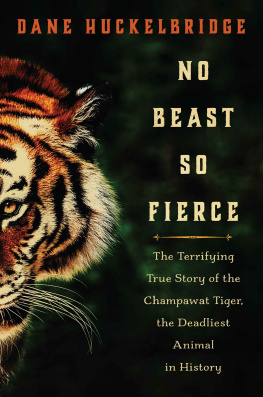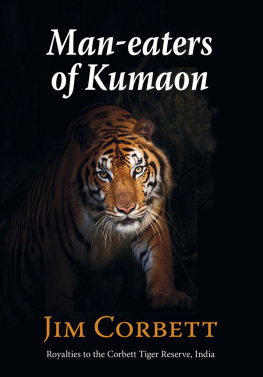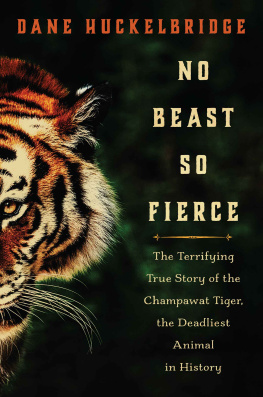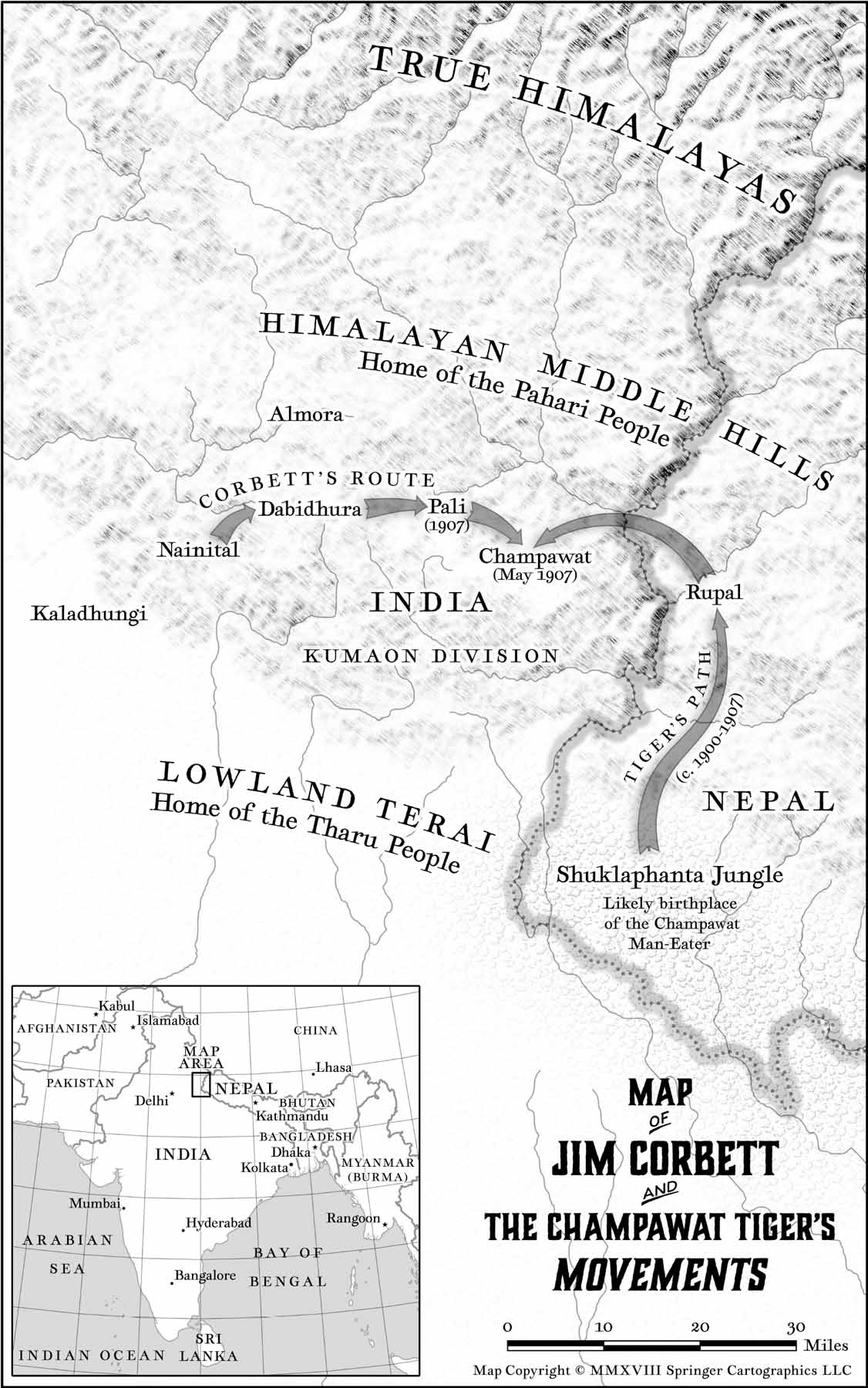No beast so fierce but knows some touch of pity. But I know none, and therefore am no beast.
Do not blame God for having created the tiger, but thank Him for not having given it wings.
We do not know the year. Nor does history record the poachers name. But around the turn of the twentieth century, somewhere in the terai near the Kanchanpur District of western Nepal, a man made a terrible mistake.
He attempted to kill a Bengal tiger.
We can imagine him to be a young manthat seems all but certain. For the local Tharu people are well acquainted with tigers, and only a youthful and inexperienced hunter would be so careless. After all, a tiger hunt among the Tharu is a solemn affair, to be initiated with a puja sacrifice of roosters and goats, as a show of respect to the forest deity Ban Dhevi. It is an act of profound spiritual and earthly significance, one that risks angering gods and kings alike. If such a decision is to be even considered, it must be blessed by a gurau with a sacred glass of rakshi, and sanctified by the wearing of holy red ribbons.
But change is coming, even to this remote province. Like others of his generation, this brash young man likely may have tasted the British gin and cigarettes that come smuggled across the border from India, and seen the Western suits and cravats one can purchase beyond the Sharda River, and he has no time for rice liquor or garlands made of ribbons. He does not see the tiger as a divine spirit, a lord of the forest, a custodian of the natural world, maintaining the balance of all things. To him, a tiger is a sack of gold and nothing more: money for clearing land, funds to buy a water buffalo and start a farm of his own. The young man bristles at the thought of eking out a living from the forest like his parents, of dwelling in a mud-walled house thatched with elephant grass. No, that is simply not for him.
So, we may imagine, he sets out from his village, a decrepit old muzzle-loader slung over his shoulder, an oblivious goat hobbling along in tow. He follows a path of packed earth, skirting the edge of the mustard and lentil fields, tracing the dry bed of a meandering nullah, until he at last reaches the sal trees where the true jungle begins. He has built a small machana tiger-hunting standnear a clearing where he has seen fresh tiger tracks in the mud, and after tying the goat to a peg in the earth, he mounts his machan and does his best to get comfortable.
The heat of the afternoon mounts, and the goat flicks its ears lazily, and the odd croak of a mating florican is the only sound to be heard. The young man wipes the sweat from his brow and scratches a mosquito bite, his initial excitement turning slowly to boredom, and then at last to irritation.
The shadows lengthen, dusk approaches, and still the scrawny goat stands tethered and unmolested. The young man begins to doubt that the tiger will come at all. Perhaps the old men in the village were right, perhaps it was foolish to even consider coming into the forest without
And then it happens. It arrives with a grace and a force unlike any the young man has ever seen. An attack appalling in its power and mesmerizing in its beauty, as if the dappled patterns of the forest floor themselves have come alive and engulfed the poor creature. A liquid blur of tawny stripes, then a mound of working muscle. The goat has time to neither move nor bleatone moment it is alive, and the next, it is not. Its neck is snapped in an increment of time too small to measure.
The young mans purpose is suddenly called into question. The notion of shooting the tiger before him feels impossibly bold, as if he were not killing a mere animal, but assassinating a king. Its body appears enormous, even from the safety of his machan. Its eyes are closer to those of a man than a pig or a deer, or any other creature he has encountered. And as if to further sour his conviction, two cubs appear, bounding almost playfully from the trees behind it. This is not just a tigershe is a mother.
But for all his fear, the idea of returning home with nothing but the frayed goat tether unsettles him even more. No, he has made his decision. It must be done. And with the mother down, it will be easy to finish off the cubs as well. Thats two more tigers than he had bargained for. He takes the old muzzle-loader in his trembling hands, raises its battered stock to his shoulder, gets the tiger in his sights, and takes one final breath before pulling the trigger.
But that is enough. The rustle of his movements, however faint, are not missed by the tigers spotted ears. It drops the goat and raises its head in alarm, as a thunderclap bursts from the treesa red sting of pain lashes at its jaw. The tiger rears back, as if to attack the air, only to find that its bite feels loose and unhinged. The taste of its own blood filling its throat, the tiger turns and streaks back into the forest, into the thick underbrush from whence it came, its two toy-sized cubs hesitating for a moment before bouncing along obediently behind.
The young man reloads his gun and springs down from his stand, racing to see if his bullet struck home. He notices the trampled earth beside the pathetic carcass of the goat, and next to it, a spattering of blood and two broken teethtiger teeth. The young man realizes his shot was poor and the tiger merely wounded, a fact that is confirmed moments later by a roar that seems to rend the very fabric of the air. He has heard tigers before, their low moaning from a distance, but this is different. He has never experienced anything like this. He feels the roar as much as hears it, in the pit of his stomach and the hollows of his chest. It is the purest distillation of rage he has ever known.
Darkness is coming. The idea of going blind into the bush to confront the enraged tiger is beyond comprehension to the young man, a nightmare he cant even begin to consider. No, it would be suicidecourting death in its most primordial form. And so, still sick with adrenaline, he slings his antique gun over his shoulder and turns back to the village on weakened knees, first walking, then running, casting harried glances over his shoulder the whole way, covering his ears to stifle the roars. And while there is no way for this young man to know the full implications of what he has done, the terror he has unleashed, the lives he will have indirectly ruined, he must surely have an inkling, with those roars reverberating through the still air and damp leaves of the sal trees, that in the pulling of that trigger, he has created a monster.
In the first decade of the twentieth century, the most prolific serial killer of human life the world has ever seen stalked the foothills of the Himalayas. A serial killer that was not merely content to kidnap victims at night and dismember their bodies, but also insisted on eating their flesh. A serial killer that, for the better part of ten years, eluded police, bounty hunters, assassins, and even an entire regiment of Nepalese Gurkhas.
A serial killer that happened to be a Royal Bengal tiger.
Specifically, a tiger known as the Man-Eater of Champawat. Far more than an apex predator that occasionally included humans in its diet, it was an animal thatfor reasons that wouldnt become apparent until its killing spree was overexplicitly regarded our species as a primary source of food. And to that end, this brazen Panthera tigris tigris










